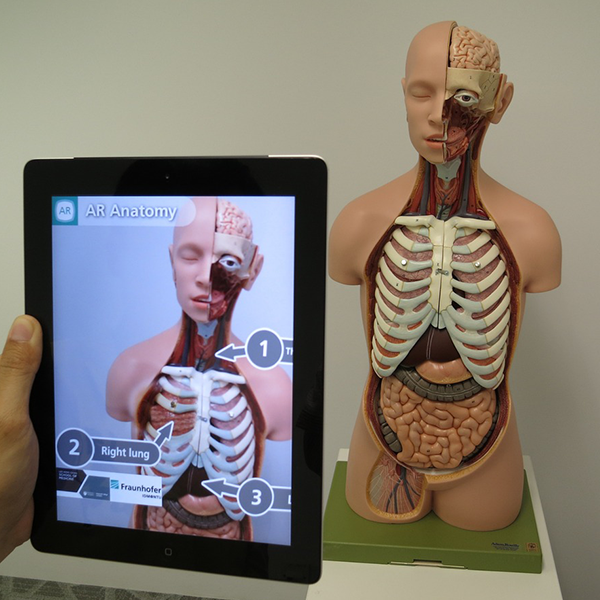Fabiola M. Martinez Licona
Augmented Reality (AR) and Virtual Reality (VR) have rapidly emerged as transformative technologies with immense potential to revolutionize various industries, including healthcare. AR and VR are increasingly integrated into clinical settings to enhance medical training, patient care, and surgical procedures. These immersive technologies offer healthcare professionals innovative tools to improve diagnosis, treatment, and patient outcomes.
One of the most significant applications of AR and VR in clinical settings is medical training and education. Traditional medical training methods often rely on textbooks, lectures, and cadaver dissections, which may not adequately prepare students for real-world clinical scenarios. AR and VR technologies provide immersive and interactive learning experiences that allow medical students to simulate surgical procedures, explore anatomical structures in 3D, and practice complex medical techniques in a risk-free environment. Integrating AR and VR into medical education allows students to develop essential clinical skills and gain valuable hands-on experience before treating patients.
AR and VR are transforming patient care and treatment in addition to medical training. These technologies enable healthcare professionals to visualize patient anatomy and medical data in real time, facilitating more accurate diagnoses and personalized treatment plans. For example, surgeons can use AR headsets to overlay patient imaging scans directly onto the surgical field, allowing for precise navigation during complex procedures. Similarly, VR simulations can help patients better understand their medical conditions and treatment options, improving patient education and informed decision-making.
Furthermore, AR and VR are crucial in surgical planning and navigation. Surgeons can use AR and VR technologies to create detailed 3D models of patient anatomy from imaging data, allowing for better preoperative planning and intraoperative guidance. AR and VR systems can provide real-time visualizations of critical structures and instruments during surgery, enhancing surgical precision and reducing the risk of complications. These advanced visualization tools empower surgeons to perform minimally invasive procedures with greater accuracy and efficiency, ultimately improving patient outcomes.
AR and VR have the potential to revolutionize healthcare delivery and accessibility beyond medical training and patient care. Telemedicine platforms with AR and VR capabilities enable remote consultations and virtual visits, allowing patients to receive expert medical care from their homes. Additionally, AR applications can assist healthcare providers in remote areas by providing real-time guidance and support during medical procedures, effectively extending the reach of specialized care to underserved populations.
Augmented Reality and Virtual Reality technologies promise to transform clinical settings and improve healthcare outcomes. From medical training and patient care to surgical planning and telemedicine, AR and VR applications are revolutionizing how healthcare is delivered and experienced. By harnessing the power of these immersive technologies, healthcare professionals can enhance their skills, optimize patient care, and address healthcare disparities, ultimately advancing the future of medicine.
Image credits: zedinteractive in Pixabay

